We Grew a Faceless YouTube Channel to 1000 Subscribers
Should creators join the rising trend of faceless YouTube channels to monetize quickly? This article shares our journey to 1,200 followers and learnings along the way.

Will "AI slop" take over YouTube and social media in 2025? How easy is it for a creator to grow a channel using AI-generated content?
To answer these questions, our startup started a competition internally to see how quickly one of us could grow a YouTube channel to 1000 subscribers. The goal was to test how far AI had come as a creative tool and see how quality and quantity come together to create audience growth.
We discovered that it's still hard to grow a YouTube channel to 1,000 subscribers. AI Video Generators make it was easier to produce a social media-ready video clip, but they don't simplify the trend identification, creative voice, and niche definition that it takes to nurture an audience.
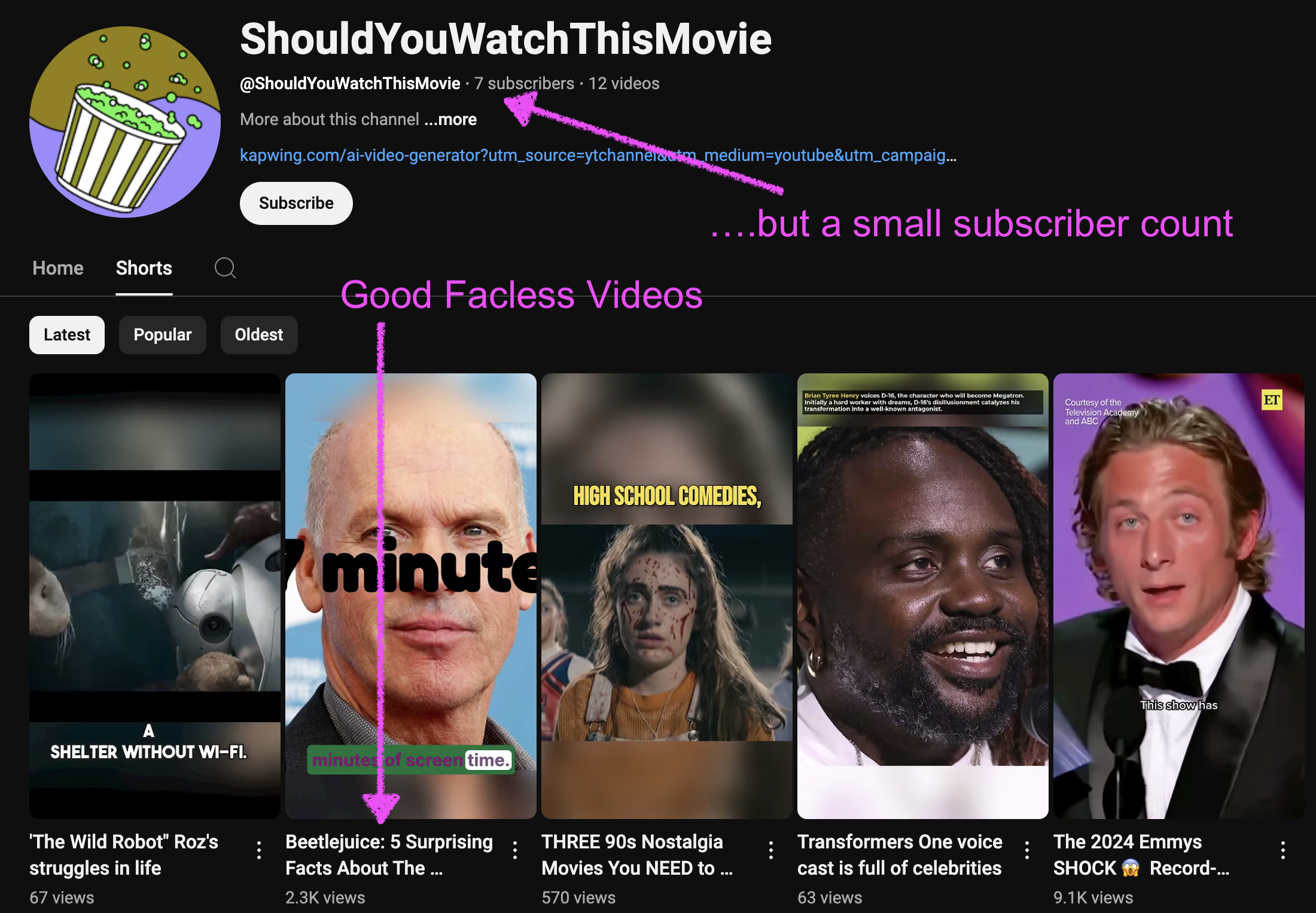
Eventually, one of the channels did get to 1000 followers, but it took longer than expected. We wanted to publish this article as a counterpoint to the YouTube videos out there that make faceless YouTube videos seem like a bag of easy cash for entrepreneurial creators.
What is a Faceless YouTube Channel?
Faceless YouTube channels are channels where the creator does not appear on camera. Usually, an AI voiceover or avatar tells the story over a montage of B-Roll and video clips. In the last two years, as AI voices have become more realistic, faceless channels have risen in popularity across social channels, with various video gurus publishing videos about how to monetize "on autopilot" using a faceless strategy.
Here's an example faceless Instagram account called @themicrosoftguy with nearly 250k followers. He uses the same voice that we did, Eleven Lab's "Adam," with text overlay and screencast videos of excel to show viewers Microsoft Office tricks.
Faceless YouTube channels often cover fast-changing industries and areas where speed-to-publish is a key factor for success. Here's another example of a channel "What's cooking on the internet" which covers emerging meme trends; their faceless 'Chopped Chin' meme explainer video has gotten more than 11,000 views.
Stats on our Faceless YouTube
Our channel - @InTheNow by Kapwing - was grown by novices, not full-time creators. But we wanted to share our data so that other amateurs and aspiring creators can see where 60 videos worth of faceless content gets you:
- Total views: 1.1 Million
- Best performing video: 216k views
- Average videos views: 19k views
- Number of videos posted: 60. 58 YouTube Shorts and 2 regular YouTube videos.
- Number of days: We posted the first video on June 17 and hit 1k subs on November 21, 2024. So, it took 157 days, about six months, to get to 1k subscribers.
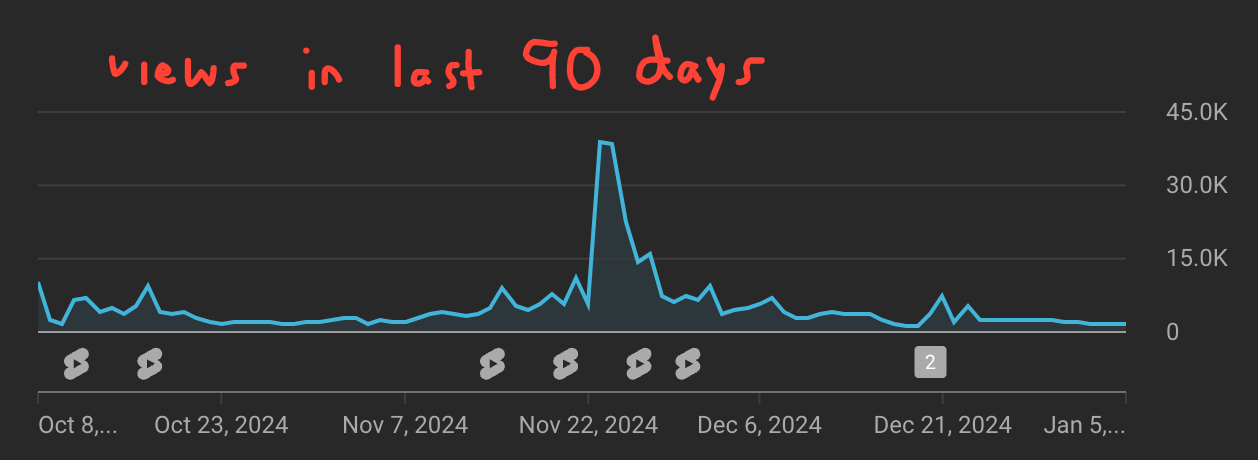
At the time of writing, our channel has about 1.2k subscribers. Below, I'll share how we made the channel for other creators hoping to grow an audience with faceless video.
How to Start a Faceless YouTube Channel
Choosing a Topic
I started with a general topic - sports news - that I thought there were plenty of updates for. I like sports at a surface level and particularly enjoy the human stories behind athletes, so I focused on lifestyle stories for Pro Athletes.
When you set up a new channel, you'll need to make your channel art: profile picture, logo, and banner. Check out this channel art series to learn more about how to design a great one. Once I had a topic, I wrote a script for my first 60-second vertical video, used an AI video generator to make the first draft with captions, and published it to YouTube Shorts.
After posting about a dozen videos, I had one rise to more than 200k views, and it was a video about women’s gymnastics and the Olympics. I also enjoy watching women’s gymnastics, so I decided to make the channel more narrow and focus on just women gymnasts as a niche.
I updated the channel art to focus on gymnastics and used terms like "Simone Biles" to search for trends that would make good videos.
- Varied, fresh media, like reviews of products, movies, companies, etc
- Sports and entertainment
- Current events
- Philosophy and psychology
I unlocked growth for our channel when I discovered a keyword pattern that I could replicate. For my niche, this topic pattern was "Hardest routine on ___," inspiring ~10 video topics that each took less than 20 minutes to perfect, export, and publish. I also made biopic videos for many of the top gymnasts in the Olympics, who were all celebrities at the time.
Automatically Making a Faceless YouTube Video
Kapwing's AI Script to Video simplifies the process of making a video by generating a text-to-speech layer reading your script aloud over relevant BRoll. The videos are pulled from all over the internet, or you can upload videos as "custom broll" for it to use as the source material. Here's how to make a faceless YouTube video automatically:
- Enter a prompt: From Kapwing's home page, open the AI modal using the lightbulb icon. Type a prompt to make a video from an idea, an article URL, or an existing script.

- Edit the generated script: Kapwing uses Perplexity's API, which has fewer hallucinations than GPT, to auto-generate the script. Creators can re-prompt a few times to get the script right, change the tone, or instruct the AI to focus more on a specific topic. The duration should be less than 3 minutes long to qualify for YouTube Shorts.
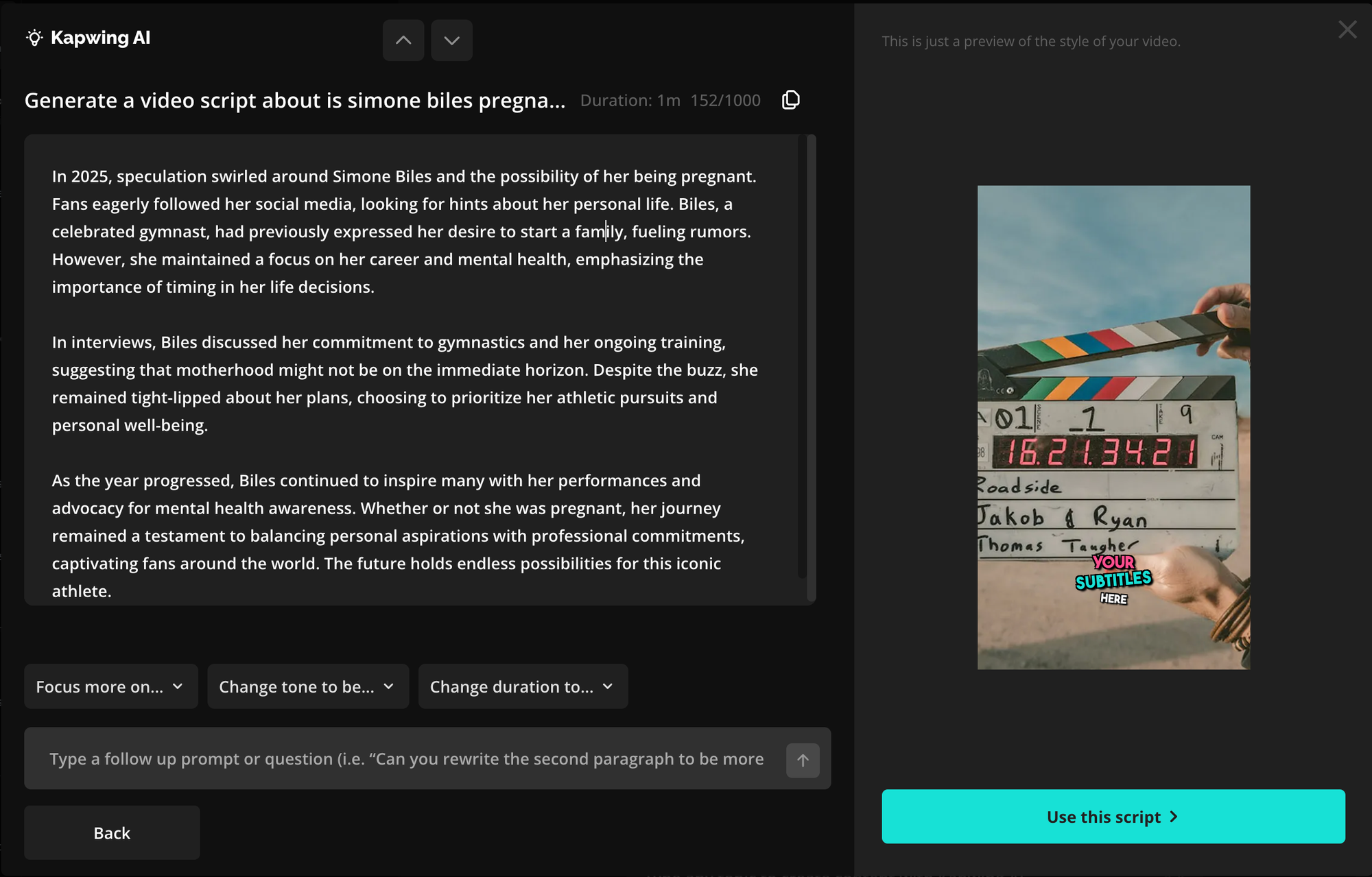
- Choose the options before generating the video: Kapwing automatically adds animated subtitles on the video and allows you to choose from dozens of realistic-sounding text to speech voices. Alternatively, you can make a voice clone to mimic your own voice. Creators can also upload custom BRoll to customize the videos that are pulled in for the Faceless output.
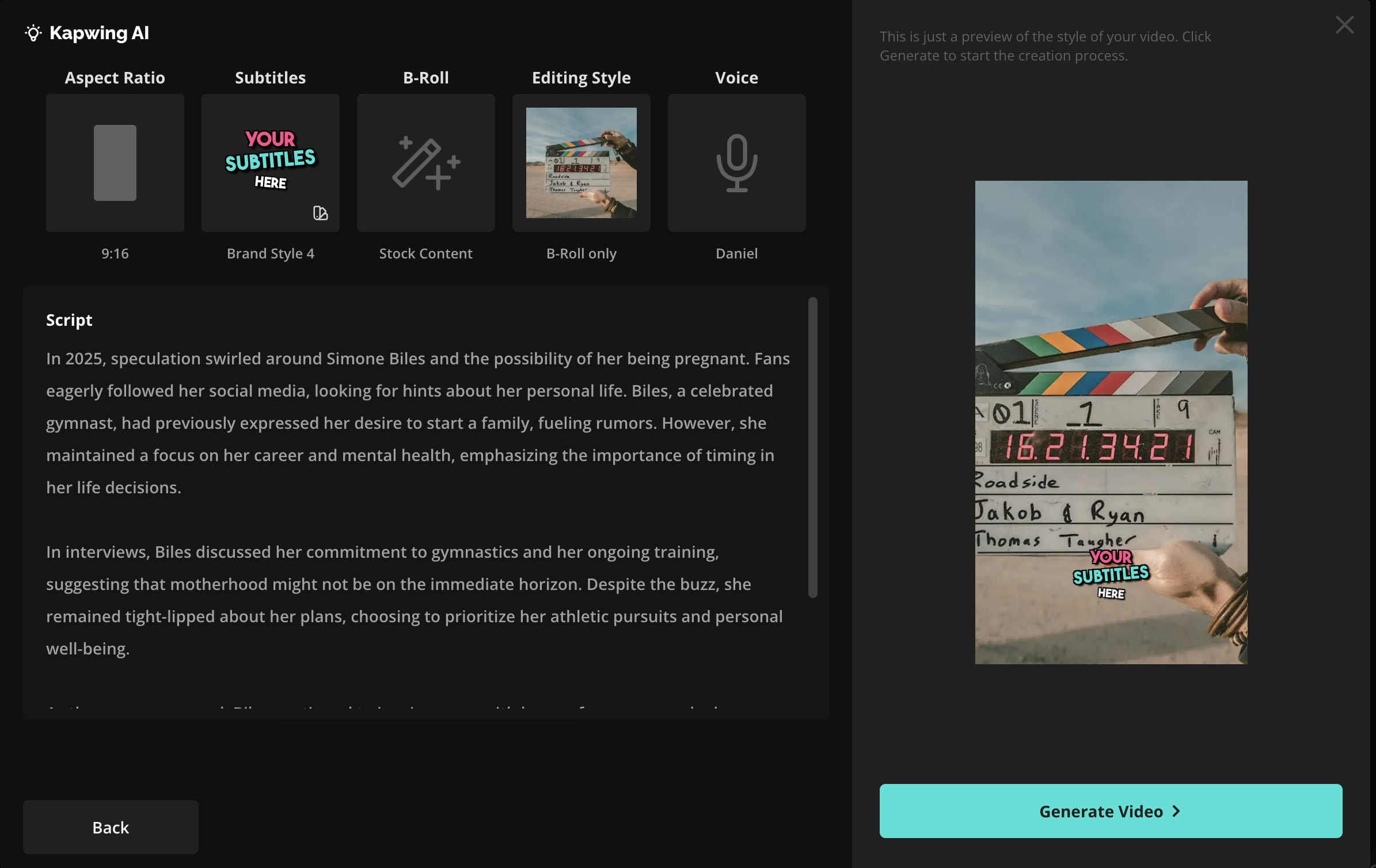
- [Optional] Tweak the video before publishing. After your Generated Video loads, you will see the voiceover, background music, and stock videos appear in the timeline, timed out to the script. Kapwing is a fully-functional video editor, so it's easy to customize the generated output. If there are any odd bits of footage, you can remove or replace them, cutting them out of the video before exporting. In the AI Voices tab, you can change the script
- Publish directly to YouTube: On Kapwing, you can share to YouTube directly from the export menu, bypassing the download and upload phases. After signing in to your YouTube channel, write a description, add tags, choose a category, and post the video directly. This can expedite the process and help creators publish videos faster.
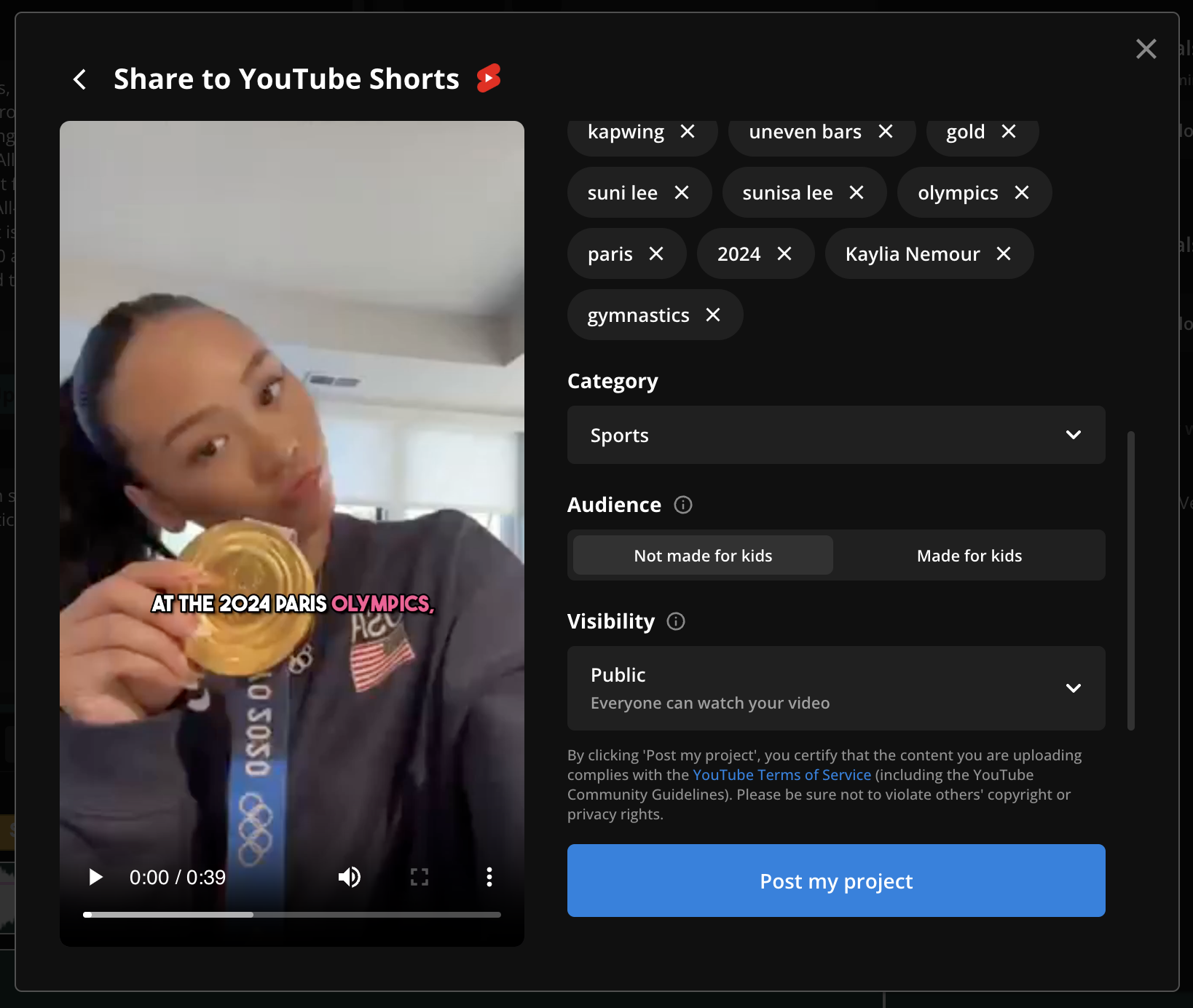
AI applications like ChatGPT hallucinate facts, so if you want to make an informative faceless YouTube channel make sure to double-check the basis of the script before you generate a video to accompany it. As your audience grows, viewers will notice false information and leave comments to remind you of when AI got it wrong.
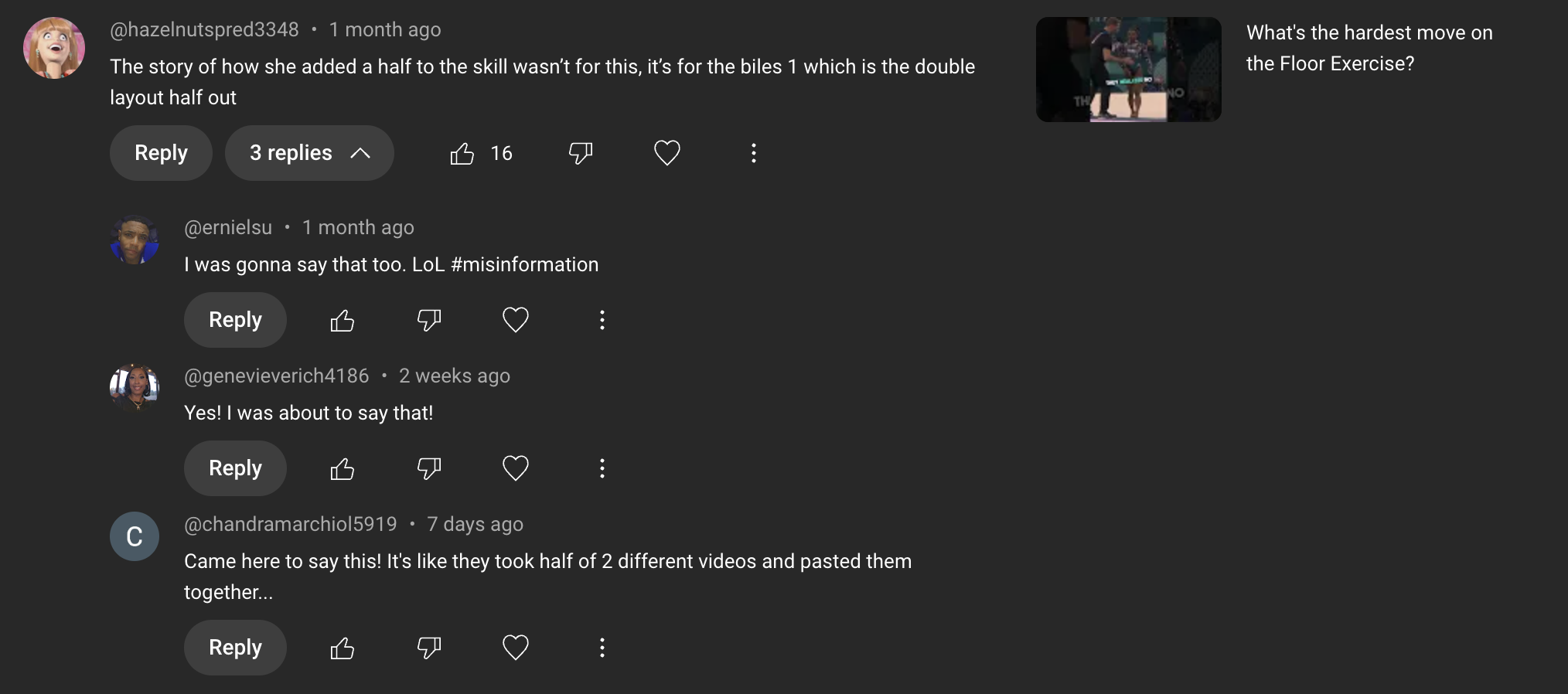
YouTube Shorts Description, Tags, and Meta-Data
I used Perplexity to generate a description. YouTube Shorts videos often have short sentences with double-spaced lines between paragraphs. Creators do not need a custom thumbnail to accompany a YouTube Short, but you may want to craft an thumbnail with a facial expression if you're uploading a regular long-from YouTube video.
For audio, I leveraged Kapwing's suggested background music as the tunes for my videos. The music tracks in Kapwing's audio tab are license free, so creators can use them without fear of takedowns, copyright strikes, or demonetization.
Monetization
How much is a YouTube channel with 1000 subscribers worth? Not much, because subscriber count does not qualify you for YouTube’s Shorts monetization program. To reach monetization status, YouTube channels much achieve these three milestones:
- 500 subscribers
- 3 video uploads in the last 90 days
- And one of the following:
- 3,000 public watch hours
- 3 Million public Shorts views
Although our channel hit 1 Million views, we’re not getting paid at all for new video posts. Since it is mostly YouTube Shorts, my faceless channel only has 37 watch hours and 500k public Shorts views in the last 90 days, so although it hits the first two criteria, it does not qualify yet for ads revenue sharing.
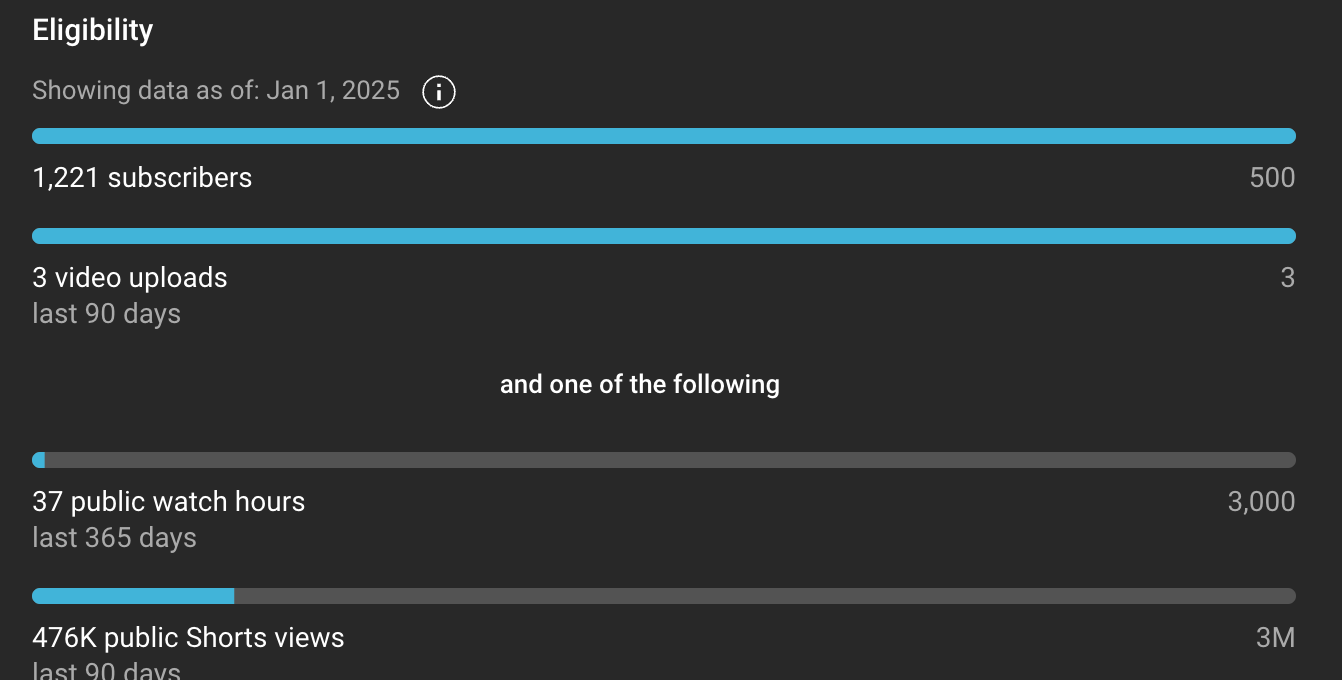
On YouTube Shorts, it takes a lot of viral videos before you qualify for AdSense revenue sharing. The 90-day threshold also requires that creators can produce videos at a fast clip, so it's better to go hard for a short period of time than publish gradually over an extended time frame. I explored generating long-form video for the channel to increase view time, but the lack of inflection in an AI Voice makes it hard for someone to listen for a long time.
Learnings from Growing a Faceless Channel
Following this process, we published about 60 videos on our faceless channel. The growth was slower than expected! Despite a consistent publishing routine, it took about 6 months to reach 1,000 subscribers.
Some surprising learnings:
- YouTube watchers do not seem to mind AI voices. For the male AI voice "Adam," we didn’t get almost any comments about AI or the use of the artificial voice.
- Your channel does grow passively, once it gets popular enough. The shorts I posted got the most views in the week that they were published, but many of them would experience a bump a few weeks later also. This is different than TikTok, where our videos seem to either go viral.
- On October 3, YouTube took down my channel with very little explanation :( They said “"Content that promotes spam, scams, or other deceptive practices isn't allowed on YouTube.” I appealed the takedown immediately, and it was reinstated within the hour. To me, this showed that YouTube is on high alert to takedown AI Voice content.
Not surprising learnings:
- Good faceless videos can be made in less than an hour. Using Kapwing’s Script to Video generator helped a lot as relevant videos, captions, and music were pulled in, plus it was simple to replace the suggested video clips with ones from my own library.
- Search matters a lot. Two of my top performing videos are “Is Simone Biles injured?” and "When Did Simone Biles Start Gymnastics?" Neither of these videos were particularly great videos (in fact, the second one had a glitch that caused the images to be distorted on export), but they did answer a current question that people might be searching for. Optimizing titles for things people might be searching for led to sustained traffic over time.
- For a faceless channel, a "Subscribe" call to action is even more important than for videos featuring a face and personality. Given that a faceless channel is anonymous without the pull of an attractive person, YouTube viewers have less reason to watch your next video unless you give them a reason to subscribe and follow along.
Conclusion: Will AI Slop takeover your Shorts feed?
Probably not yet. Meta published a report recently that AI content is less than 1% of what is shared on their platform. As amateur creators, our team found it difficult to produce videos that caught on, and none of the 6 people who tried were able to reach monetization status within 6 months. With no financial incentive, it's hard to imagine spammers across the world taking the time to flood social media with AI content. In the meantime, AI generation is a great tool for creatives to fill the blank canvas, get ideas, and breakthrough creative block.
For our team, making YouTube videos and racing to 1000 was a fun bonding exercise and a good way to dogfood our own product. But, I don't think that it's our business's next major revenue stream.
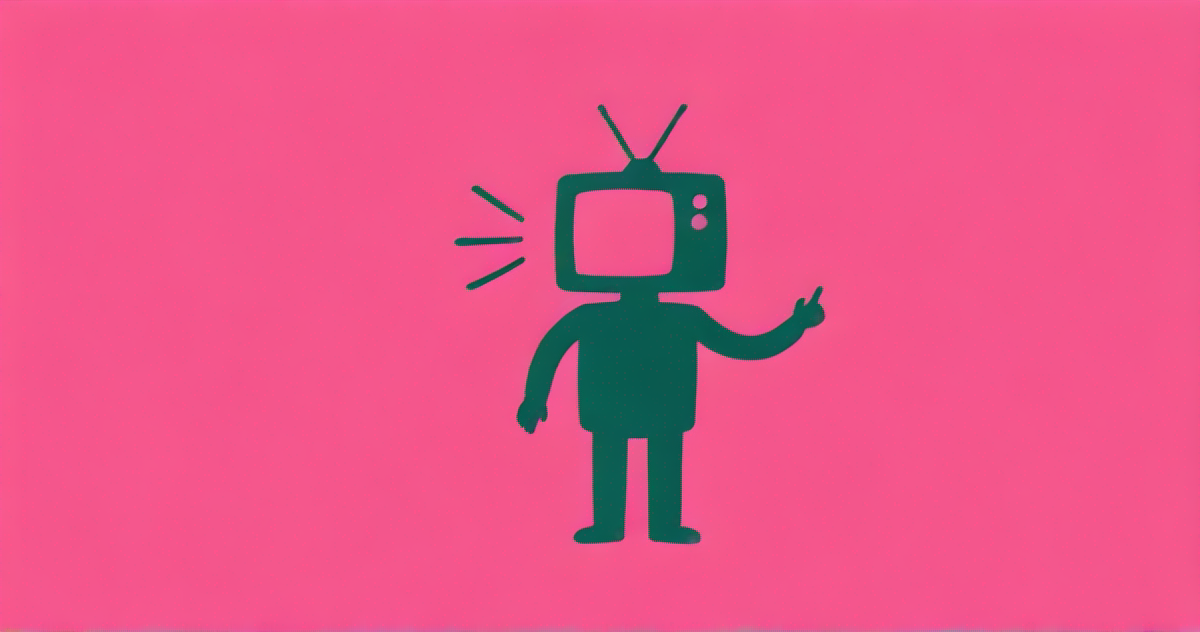
Thanks for reading! Follow along here on Kapwing's resources for more tips on navigating the changing world of YouTube and digital media. We publish content for creators and creative entrepreneurs who are trying to grow an audience.









